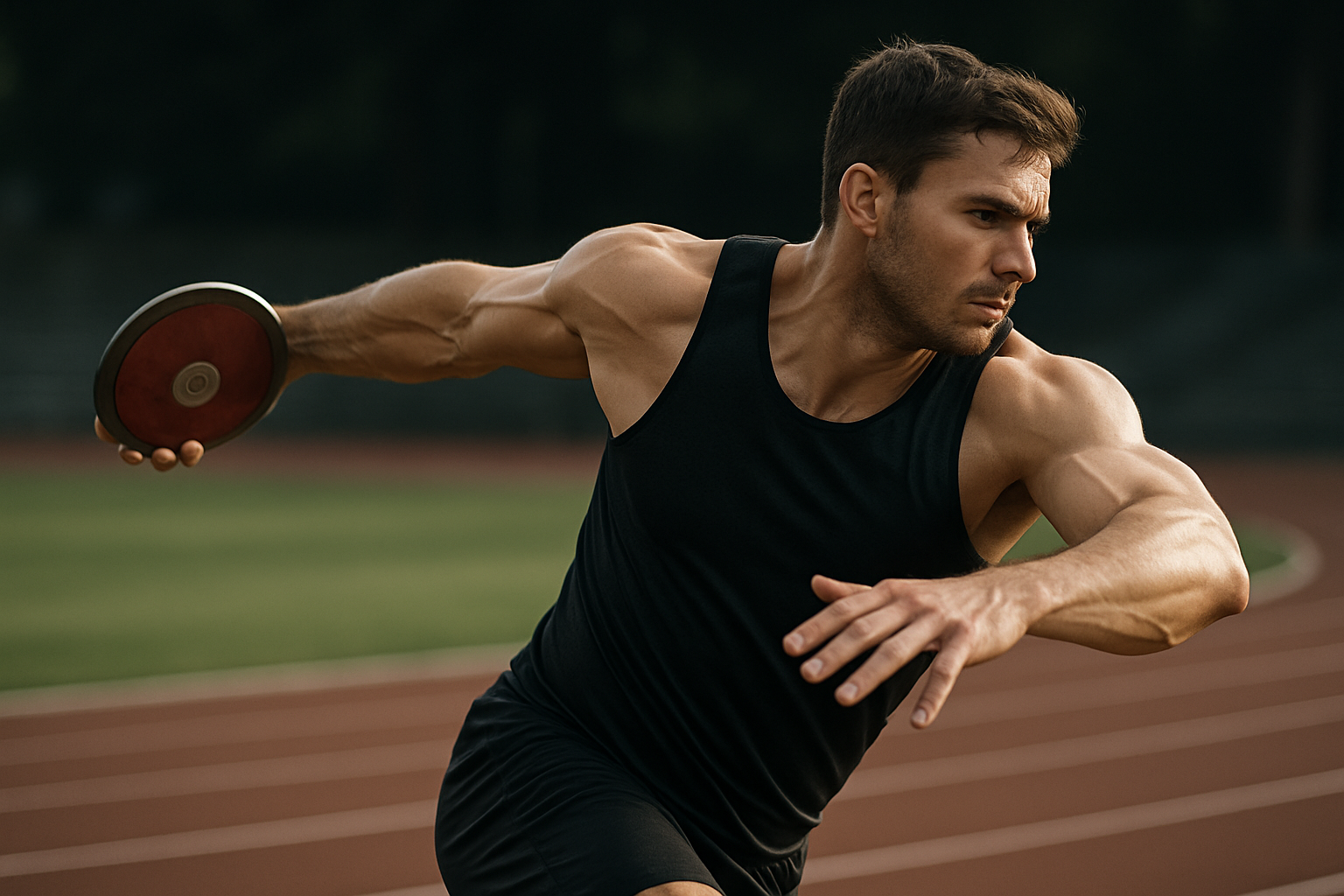Neuromuscular Training: The Key to Unlocking Athletic Potential
The world of sports performance is constantly evolving, with athletes and coaches seeking innovative ways to gain a competitive edge. Neuromuscular training has emerged as a groundbreaking approach that combines neurological and muscular systems to enhance athletic performance. This multifaceted method focuses on improving the communication between the brain and muscles, leading to better coordination, balance, and overall athletic prowess.

The Science Behind Neuromuscular Training
Neuromuscular training is rooted in the complex interplay between the nervous system and the muscular system. At its core, this training method aims to enhance the efficiency and effectiveness of the communication pathways between the brain and muscles. This improved neural connection allows for better muscle recruitment, faster reaction times, and more precise movement control.
The nervous system plays a crucial role in athletic performance by sending signals from the brain to the muscles, coordinating movement, and processing sensory information. Through specialized exercises and drills, neuromuscular training targets the development of these neural pathways, leading to improved proprioception (awareness of body position), balance, and coordination.
Research has shown that consistent neuromuscular training can lead to significant improvements in athletic performance across various sports. A study published in the Journal of Strength and Conditioning Research found that athletes who underwent a six-week neuromuscular training program showed marked improvements in agility, jump performance, and sprint times compared to a control group.
Key Components of Neuromuscular Training
Effective neuromuscular training incorporates several key components that work together to enhance athletic performance:
-
Proprioceptive exercises: These focus on improving an athlete’s awareness of their body position in space. Examples include balance board training, single-leg exercises, and blindfolded drills.
-
Plyometric training: This involves explosive movements that enhance the stretch-shortening cycle of muscles, improving power output and reaction time. Box jumps, depth jumps, and medicine ball throws are common plyometric exercises.
-
Stabilization exercises: These target the core and other stabilizing muscles to improve overall balance and control during dynamic movements. Planks, Russian twists, and stability ball exercises fall into this category.
-
Agility drills: These exercises improve an athlete’s ability to change direction quickly and efficiently. Ladder drills, cone drills, and shuttle runs are popular agility exercises.
-
Sport-specific skill training: This involves practicing sport-specific movements with a focus on proper technique and neuromuscular control. For example, a tennis player might practice serving with a emphasis on proprioception and muscle recruitment.
Benefits of Neuromuscular Training for Athletes
The advantages of incorporating neuromuscular training into an athlete’s regimen are numerous and far-reaching:
-
Improved performance: By enhancing the connection between the brain and muscles, athletes can execute movements with greater precision, speed, and power. This translates to better on-field performance across various sports.
-
Injury prevention: Neuromuscular training has been shown to reduce the risk of injuries, particularly non-contact injuries such as ACL tears. A study published in the American Journal of Sports Medicine found that athletes who underwent neuromuscular training had a 50% lower risk of ACL injuries compared to those who did not.
-
Enhanced balance and coordination: The focus on proprioception and stabilization exercises leads to improved balance and coordination, which are crucial for many sports.
-
Faster reaction times: By improving the efficiency of neural pathways, athletes can react more quickly to stimuli, giving them an edge in fast-paced sports.
-
Better body awareness: Increased proprioception allows athletes to have a better understanding of their body position and movement, leading to improved technique and performance.
-
Increased power output: Plyometric exercises and improved muscle recruitment can lead to greater power generation, benefiting athletes in explosive sports.
-
Enhanced agility: Agility drills and sport-specific skill training improve an athlete’s ability to change direction quickly and efficiently.
Implementing Neuromuscular Training in Athletic Programs
To effectively incorporate neuromuscular training into an athletic program, coaches and trainers should consider the following guidelines:
-
Start with a comprehensive assessment: Before beginning a neuromuscular training program, it’s essential to assess an athlete’s current level of neuromuscular control, balance, and proprioception. This baseline evaluation will help tailor the program to the individual’s needs and track progress over time.
-
Gradually increase complexity: Begin with simple exercises and progressively increase the difficulty as the athlete’s neuromuscular control improves. This might involve moving from stable surfaces to unstable surfaces, or from single-plane movements to multi-plane movements.
-
Emphasize proper technique: Correct form is crucial in neuromuscular training. Athletes should focus on maintaining proper alignment and control throughout each exercise, even if it means reducing the speed or intensity of the movement.
-
Incorporate sport-specific movements: While general neuromuscular training exercises are beneficial, it’s important to include movements that directly relate to the athlete’s sport. This helps transfer the improved neuromuscular control to on-field performance.
-
Use a variety of training modalities: Incorporate a mix of balance exercises, plyometrics, agility drills, and stabilization exercises to target all aspects of neuromuscular control.
-
Integrate into existing training programs: Neuromuscular training should complement, not replace, traditional strength and conditioning programs. Aim to incorporate neuromuscular exercises into warm-ups, cool-downs, or as separate training sessions.
-
Prioritize consistency: Like any form of training, consistency is key for neuromuscular development. Aim for regular sessions throughout the training cycle, not just during pre-season or off-season periods.
-
Monitor progress and adjust accordingly: Regularly reassess athletes’ neuromuscular control and performance metrics to track improvements and adjust the training program as needed.
Case Studies: Neuromuscular Training Success Stories
To illustrate the real-world impact of neuromuscular training, let’s examine a few case studies from different sports:
-
Soccer: A professional soccer team implemented a comprehensive neuromuscular training program for their youth academy players. Over the course of a season, they saw a 30% reduction in non-contact injuries and a significant improvement in players’ agility and change-of-direction speed. The team’s coaches reported that players demonstrated better balance and control during high-intensity matches, leading to improved overall performance.
-
Basketball: A college basketball program integrated neuromuscular training into their off-season workouts. After eight weeks, players showed marked improvements in vertical jump height, lateral quickness, and shooting accuracy under fatigue. The team’s athletic trainer noted that the improved proprioception and balance translated to better body control during games, particularly in rebounding and defensive positioning.
-
Tennis: A professional tennis player struggling with recurring ankle sprains underwent an intensive neuromuscular training program. After three months of targeted exercises focusing on ankle stability and proprioception, the player reported increased confidence in their movements on the court. Their coach observed improved footwork and balance during rapid direction changes, leading to better court coverage and shot selection.
-
Track and Field: A group of sprinters incorporated neuromuscular training into their daily warm-up routine. Over a six-month period, they saw improvements in their start reaction times and overall sprint performance. The athletes reported feeling more “connected” to the track and having better control over their acceleration and top-end speed phases.
These case studies demonstrate the versatility and effectiveness of neuromuscular training across various sports, highlighting its potential to enhance performance and reduce injury risk.
Challenges and Considerations in Neuromuscular Training
While the benefits of neuromuscular training are clear, there are several challenges and considerations to keep in mind when implementing these programs:
-
Time constraints: Effective neuromuscular training requires consistent practice and can be time-consuming. Coaches and athletes may struggle to fit these exercises into already packed training schedules.
-
Proper instruction: Many neuromuscular exercises require specific techniques and progressions. Without proper instruction, athletes may not perform the exercises correctly, limiting their effectiveness or potentially increasing injury risk.
-
Individual differences: Athletes may respond differently to neuromuscular training based on factors such as age, experience level, and genetic predisposition. Programs may need to be tailored to individual needs for optimal results.
-
Motivation and engagement: Some athletes may find neuromuscular exercises less engaging than traditional strength or skill training. Coaches may need to educate athletes on the benefits and incorporate variety to maintain motivation.
-
Equipment and facilities: Certain neuromuscular training exercises require specialized equipment (e.g., balance boards, agility ladders) or specific training environments, which may not be readily available to all teams or athletes.
-
Long-term commitment: Neuromuscular adaptations take time to develop and require ongoing maintenance. Athletes and coaches must be committed to long-term implementation for sustained benefits.
-
Integration with other training modalities: Balancing neuromuscular training with other aspects of athletic development, such as strength training, cardiovascular conditioning, and sport-specific skills, can be challenging.
-
Measuring progress: Quantifying improvements in neuromuscular control can be more challenging than tracking traditional performance metrics like strength or speed. This may require the use of specialized testing equipment or protocols.
The Future of Neuromuscular Training in Sports
As our understanding of the nervous system and its role in athletic performance continues to grow, the field of neuromuscular training is poised for significant advancements:
-
Technology integration: Virtual reality and augmented reality technologies may be incorporated into neuromuscular training programs, allowing for more immersive and sport-specific training environments.
-
Personalized programming: Advanced analytics and machine learning algorithms could help create highly individualized neuromuscular training programs based on an athlete’s unique physiology and performance data.
-
Neuroplasticity-focused approaches: As research in neuroplasticity progresses, new training methods may emerge that specifically target the brain’s ability to form new neural connections, potentially accelerating skill acquisition and performance improvements.
-
Integration with cognitive training: Future neuromuscular training programs may incorporate elements of cognitive training to enhance decision-making skills and reaction times in conjunction with physical performance.
-
Wearable technology: The development of more sophisticated wearable sensors may allow for real-time feedback on neuromuscular control during training and competition, enabling immediate adjustments and more targeted interventions.
-
Genetic considerations: As our understanding of the genetic factors influencing neuromuscular control improves, training programs may be tailored based on an athlete’s genetic profile to maximize effectiveness.
-
Youth development: Increased focus on neuromuscular training in youth sports programs may lead to better long-term athletic development and reduced injury rates among young athletes.
-
Cross-disciplinary applications: The principles of neuromuscular training may find applications beyond sports, such as in rehabilitation programs for non-athletes or in occupational settings requiring fine motor control.
Neuromuscular Training for Different Sports
While the fundamental principles of neuromuscular training remain consistent across sports, the specific applications and focus areas can vary significantly depending on the demands of each discipline:
-
Team sports (e.g., soccer, basketball, football):
-
Emphasis on multi-directional agility and quick changes of direction
-
Focus on balance and stability during contact situations
-
Integration of sport-specific skills with neuromuscular control (e.g., passing, shooting)
-
-
Individual sports (e.g., tennis, golf, swimming):
-
Targeted proprioceptive training for specific body parts (e.g., shoulder stability for swimmers)
-
Emphasis on rotational stability and power generation (e.g., for golf swings or tennis serves)
-
Balance and coordination exercises tailored to sport-specific stances and movements
-
-
Combat sports (e.g., boxing, martial arts):
-
Focus on reactive balance and stability during dynamic movements
-
Integration of neuromuscular control with striking and defensive techniques
-
Emphasis on proprioception for maintaining optimal body positioning
-
-
Endurance sports (e.g., running, cycling):
-
Neuromuscular training to improve running or pedaling economy
-
Focus on maintaining proper form and alignment during fatigue
-
Integration of balance and proprioception exercises to prevent overuse injuries
-
-
Aesthetic sports (e.g., gymnastics, figure skating):
-
Emphasis on fine motor control and precision of movements
-
Balance and proprioception training on various surfaces and apparatus
-
Integration of neuromuscular control with complex skill sequences
-
-
Strength and power sports (e.g., weightlifting, shot put):
-
Focus on stability and control during explosive movements
-
Integration of neuromuscular training with technique refinement
-
Emphasis on proprioception for optimal body positioning during lifts or throws
-
By tailoring neuromuscular training programs to the specific demands of each sport, athletes can maximize the transfer of improved neuromuscular control to their competitive performance.
Neuromuscular Training for Injury Prevention
One of the most significant benefits of neuromuscular training is its potential to reduce the risk of sports-related injuries. Several studies have demonstrated the effectiveness of these programs in preventing common athletic injuries:
-
ACL injury prevention: A meta-analysis published in the British Journal of Sports Medicine found that neuromuscular training programs reduced the risk of ACL injuries by up to 50% in female athletes, who are particularly susceptible to this type of injury.
-
Ankle sprain reduction: Research has shown that proprioceptive training can significantly reduce the risk of ankle sprains, particularly in athletes with a history of previous sprains.
-
Hamstring injury prevention: Neuromuscular training programs that focus on eccentric hamstring exercises and proper running mechanics have been shown to reduce the incidence of hamstring strains in soccer players and sprinters.
-
Lower back pain management: Core stability exercises and neuromuscular control training have been effective in reducing lower back pain in athletes across various sports.
-
Shoulder injury prevention: In overhead athletes (e.g., baseball pitchers, volleyball players), neuromuscular training focused on scapular control and rotator cuff stability has shown promise in reducing shoulder injuries.
To maximize the injury prevention benefits of neuromuscular training, programs should:
-
Begin early in an athlete’s career, ideally during youth sports participation
-
Be sport-specific and address the most common injury patterns in each discipline
-
Include a combination of balance, proprioception, plyometric, and strength exercises
-
Emphasize proper technique and body alignment during all movements
-
Be performed consistently throughout the training cycle, not just during pre-season
Neuromuscular Training for Rehabilitation
In addition to its role in performance enhancement and injury prevention, neuromuscular training plays a crucial role in the rehabilitation of injured athletes. The principles of neuromuscular control are particularly important in helping athletes regain function and return to sport safely after an injury:
-
Post-operative rehabilitation: Following surgeries such as ACL reconstruction or shoulder stabilization, neuromuscular training is essential for restoring proprioception and re-establishing proper movement patterns.
-
Chronic ankle instability: Athletes with recurrent ankle sprains often benefit from targeted neuromuscular training to improve ankle stability and reduce the risk of future injuries.
-
Patellofemoral pain syndrome: Neuromuscular exercises focusing on hip and knee control can help alleviate pain and improve function in athletes with knee pain.
-
Low back pain: Core stability exercises and neuromuscular control training are often key components of rehabilitation programs for athletes with low back pain.
-
Post-concussion rehabilitation: Recent research has shown that neuromuscular training can be beneficial in the recovery process following a concussion, helping to restore balance and coordination.
-
Return-to-sport protocols: Neuromuscular assessments and training are often integral parts of return-to-sport protocols, ensuring that athletes have regained sufficient control and stability before resuming full competition.
When incorporating neuromuscular training into rehabilitation programs, it’s important to:
-
Begin with basic exercises and gradually progress to more complex, sport-specific movements
-
Focus on quality of movement rather than quantity or intensity
-
Address any muscle imbalances or compensatory patterns that may have developed due to the injury
-
Integrate neuromuscular exercises with other aspects of rehabilitation, such as strength training and flexibility work
-
Use objective measures to track progress and guide decision-making about return to sport
Neuromuscular Training Across the Lifespan
The benefits of neuromuscular training extend beyond elite athletes and can be valuable for individuals across the lifespan:
-
Youth athletes:
-
Helps develop fundamental movement skills and body awareness
-
Can improve motor control and coordination during crucial developmental stages
-
May reduce the risk of overuse injuries in young athletes
-
-
Adult recreational athletes:
-
Improves performance in weekend warriors and amateur competitors
-
Helps maintain balance and coordination as part of an overall fitness program
-
Can reduce the risk of common sports injuries
-
-
Older adults:
-
Improves balance and reduces fall risk
-
Helps maintain functional mobility and independence
-
Can be incorporated into general fitness programs for overall health benefits
-
-
Special populations:
-
Can be adapted for individuals with neurological conditions (e.g., Parkinson’s disease, multiple sclerosis) to improve balance and motor control
-
May benefit individuals with chronic conditions such as diabetes or obesity by improving overall physical function
-
By recognizing the potential applications of neuromuscular training across different age groups and populations, we can expand its impact beyond the realm of competitive sports and contribute to improved health and well-being for a broader range of individuals.





